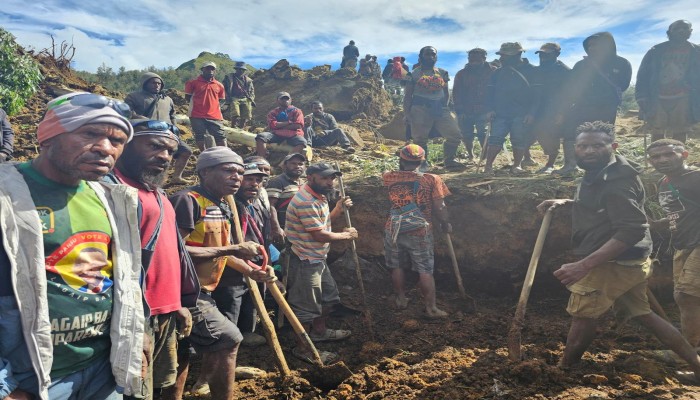 Survivors in Papua New Guinea
Survivors in Papua New Guinea
More than 2,000 people were buried alive in the landslide that smothered a Papua New Guinea village and work camp on Friday in the country’s remote northern highlands, the authorities told the United Nations on Monday.
Government officials visited the disaster site on Sunday. And even as the official death toll jumped from a few dozen to 670, they warned that far more victims than expected appeared to still be caught under the rubble.
“The landslide buried more than 2,000 people alive and caused major destruction to buildings, food gardens and caused major impact on the economic lifeline of the country,” Lusete Laso Mana, an official in the national disaster center, said in a letter to the United Nations.
The letter stressed that rescue efforts continued to be a challenge. The main highway to the area is blocked, the letter said, and the ground remains unstable as water flows beneath the rocks, shifting land and “posing ongoing danger to both the rescue teams and survivors alike.”
The region, in Enga Province, is densely populated and located near the Porgera gold mine operated by Barrick Gold, a company based in Canada, in collaboration with Zijin Mining, a Chinese group. It is an area of remote and difficult jungle terrain, in a country of around 12 million people that sits just north of Australia. Tropical and divided along tribal, ethnic and linguistic lines, Papua New Guinea is rich in natural resources but largely underdeveloped, making it especially vulnerable to natural disasters, which strike frequently.
By commenting you are accepting our Comment Policy.